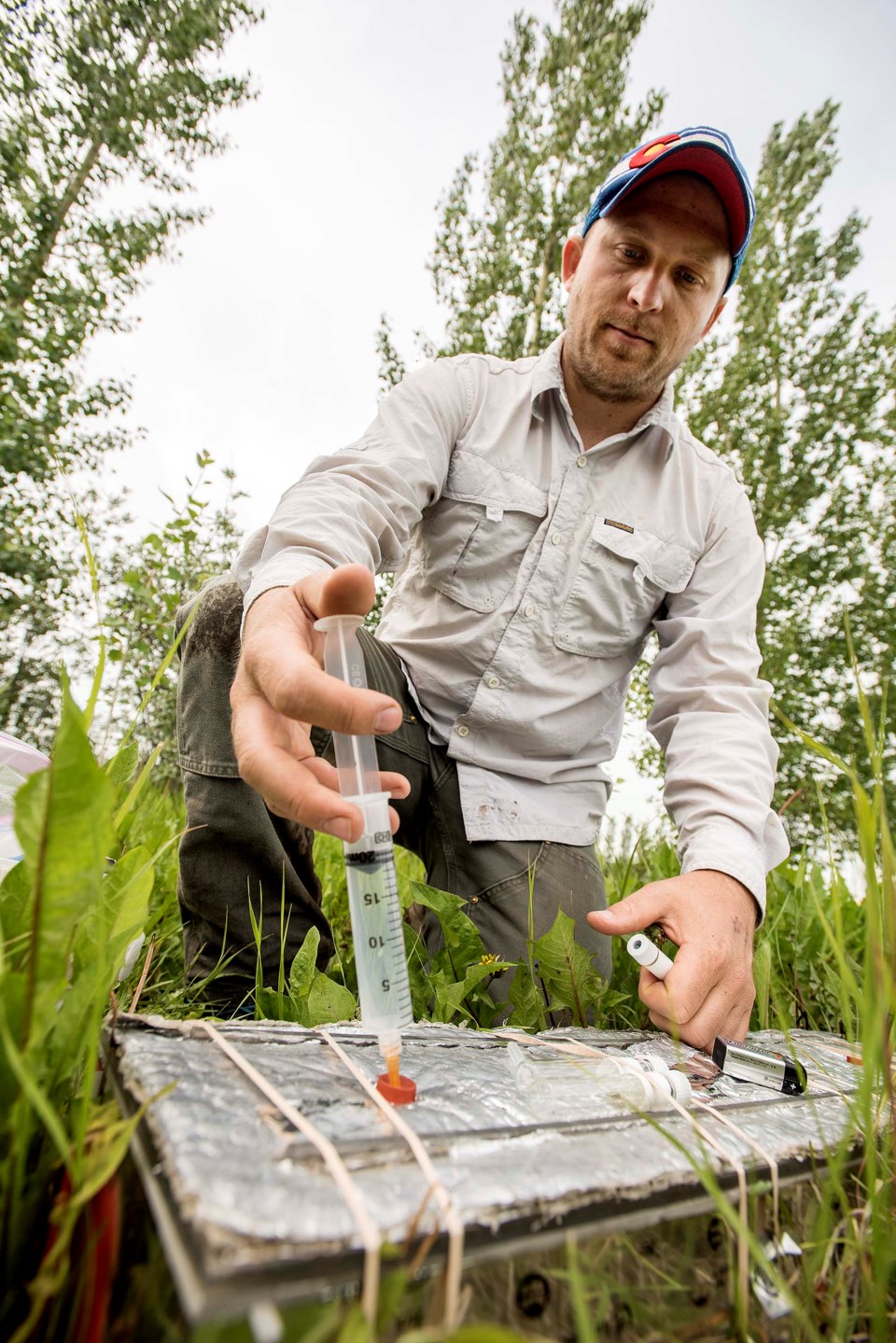Sturgeon County farmers can fight climate change and boost their bottom line by adding trees and biochar to their fields, new research done in their backyard suggests.
University of Alberta researchers held a free online talk April 20 on the initial results of an eight-year agriforestry study that involved farms across Alberta and Sturgeon County.
The study, which was financed by Agriculture and Agri-Food Canada, aimed to find the best ways for farmers to reduce greenhouse gas emissions and increase carbon storage from agriculture, said project lead and U of A soil science professor Scott Chang. Specifically, he wanted to test the carbon-catching capabilities of shelterbelts and biochar (basically charcoal).
Agriculture accounts for about eight per cent of Canada’s carbon footprint, and about 41 per cent of that contribution comes from soil, Environment Canada reports. Those emissions happen in large part when people plow dirt for farming, which unearths buried biomass and allows it to rot.
If converting soil to farmland worsens climate change, better soil management practices should help mitigate it, said Cole Gross, a PhD candidate and part of Chang’s research team. Research suggests packing more carbon into soil should also boost its ability to store water and nutrients, which results in better crops.
Trees and charcoal
Gross said the most recent phase of this project (which was from 2017 to 2020) saw the team conduct experiments at 10 plots within a 1.5-hour drive of Edmonton, some of which were in Sturgeon County. Researchers added poplar trees, biochar and manure to the plots, took metre-long soil samples, and sucked up hundreds of gas samples into syringes for analysis.
“There were a lot of mosquitoes,” Gross said of the work, and a lot of mud – he was actually trapped knee-deep in one muddy field last April 2020 for half an hour.
The team wanted to confirm that biochar would increase carbon storage when added to soil – something that had been shown in the lab but not well-tested in the real world.
The team found adding the biochar roughly doubled the amount of carbon trapped in the top 16 cm of soil after two years – an unexpected result, Gross said. Chang said about half of this increase was due to the carbon in the char (which can take centuries to decay), with the other half attributed to greater crop production (resulting in more underground roots) and lower carbon release.
“The soil is retaining the extra carbon we’ve added through the use of biochar,” Gross said, and also became slightly more productive.
“We’re definitely seeing some good effects from the biochar.”
However, the team also found the extra carbon absorbed by adding biochar to surface soil was offset by carbon released from deeper soil. Gross said this shows how farmers should view any gains to surface soil carbon from biochar with optimism, but caution.
Trees also appeared to boost carbon storage. The team found soil from 20- to 30-year-old treed shelterbelts held 22 per cent more carbon than tree-free cropland. Planting more trees did not increase carbon stored after two years – not a surprise, as carbon storage takes time, Chang said. Chang and Gross said this shows farmers should keep or expand their treed shelterbelts where possible to maximize carbon storage.
Chang and Gross said the team now hopes to publish their results in scientific journals. They also plan to do more tests on their soil samples to confirm how these treatments increased carbon absorption.
Camrose-area farmer Reg Baumle, who hosted one of the team’s test plots, said he was interested to hear more about the team’s results.
“Farmers are innovative people and we like sustainability,” he said, and they would definitely start using biochar if researchers could prove it had financial and environmental benefits.
Chang said the team’s talk would be posted to YouTube later this month. Email [email protected] for details.




